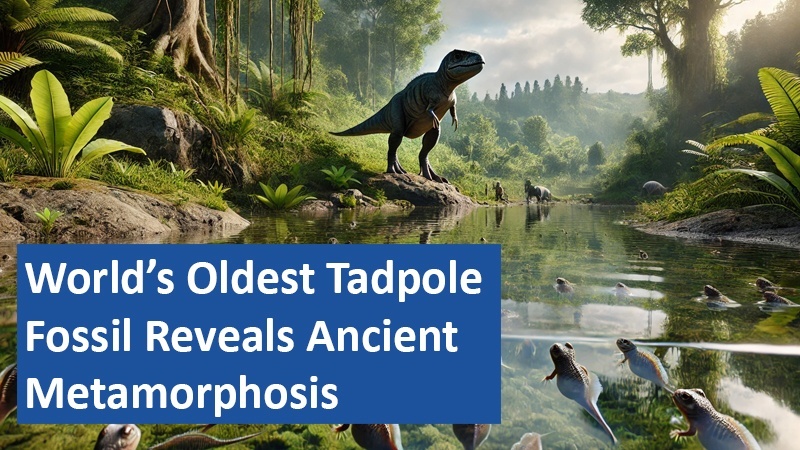Scientists in Argentina have uncovered the world’s oldest tadpole fossil, dating back 161 million years to the Jurassic period. This fossil provides crucial insight into the development of ancient frogs and shows that their transformation from aquatic larvae to land-dwelling adults has long been a part of their evolutionary history. Remarkably, the fossil reveals that even Jurassic-era tadpoles had many similarities to modern ones.
By Sadie Watkins
A Rare Fossil Discovery in Jurassic Sediments

A team led by Mariana Chuliver from the Universidad Maimónides in Buenos Aires recently found the oldest known fossil of a tadpole in Patagonia’s La Matilde Formation. Estimated to be around 161 million years old, this specimen lived alongside dinosaurs and has retained both bony and soft tissue details, including preserved eye structures and traces of nerves. This exceptional preservation offers scientists a rare window into the development of ancient amphibians. The fossil’s near-complete condition allows researchers to observe that this tadpole was already well along in its transformation to an adult frog.
The Evolution of Frog Metamorphosis
Frog metamorphosis has long been a mystery in evolutionary studies, as records of ancient tadpoles are scarce compared to adult frog fossils. While frog fossils date back over 215 million years, previously the oldest evidence of tadpoles was from the Cretaceous period, around 145 million years ago. This newly found Jurassic fossil provides the earliest evidence that tadpoles from ancient times followed a similar lifecycle to modern frogs. Chuliver’s team noted that this tadpole had fully formed limbs and a largely ossified skeleton, indicating that it was close to becoming a land-dwelling frog when it died.
A Giant Among Tadpoles
This ancient tadpole belonged to the now-extinct species Notobatrachus degiustoi, and its size is impressive: at 6 inches long, it was unusually large compared to today’s tadpoles. Its giant form suggests that both the juvenile and adult stages of this species were substantial in size. Scientists speculate that this type of gigantism may have evolved independently in Notobatrachus, as such large sizes are rare among both ancient and modern frog species. The surrounding sediment layers indicate that this species inhabited a floodplain alongside other Jurassic animals and plants, creating a diverse ecosystem.
A Familiar Lifestyle Over Millions of Years
Despite its age, this fossil shows striking similarities to present-day tadpoles, particularly in terms of anatomy and feeding mechanisms. According to Chuliver’s team, this ancient tadpole’s skull structure hints at an early filter-feeding apparatus, allowing it to capture particles from water currents much like today’s tadpoles. This discovery suggests that a two-phase life cycle involving aquatic filter-feeding tadpoles was well established in frog evolution by the Jurassic period. The findings highlight that frogs have retained this lifecycle for at least 161 million years, underscoring the evolutionary success of this developmental process.
The discovery of this ancient tadpole fossil broadens our understanding of frog evolution and supports the idea that early frogs developed similar life cycles to their modern descendants.
Based on information from scinexx.de and own research.